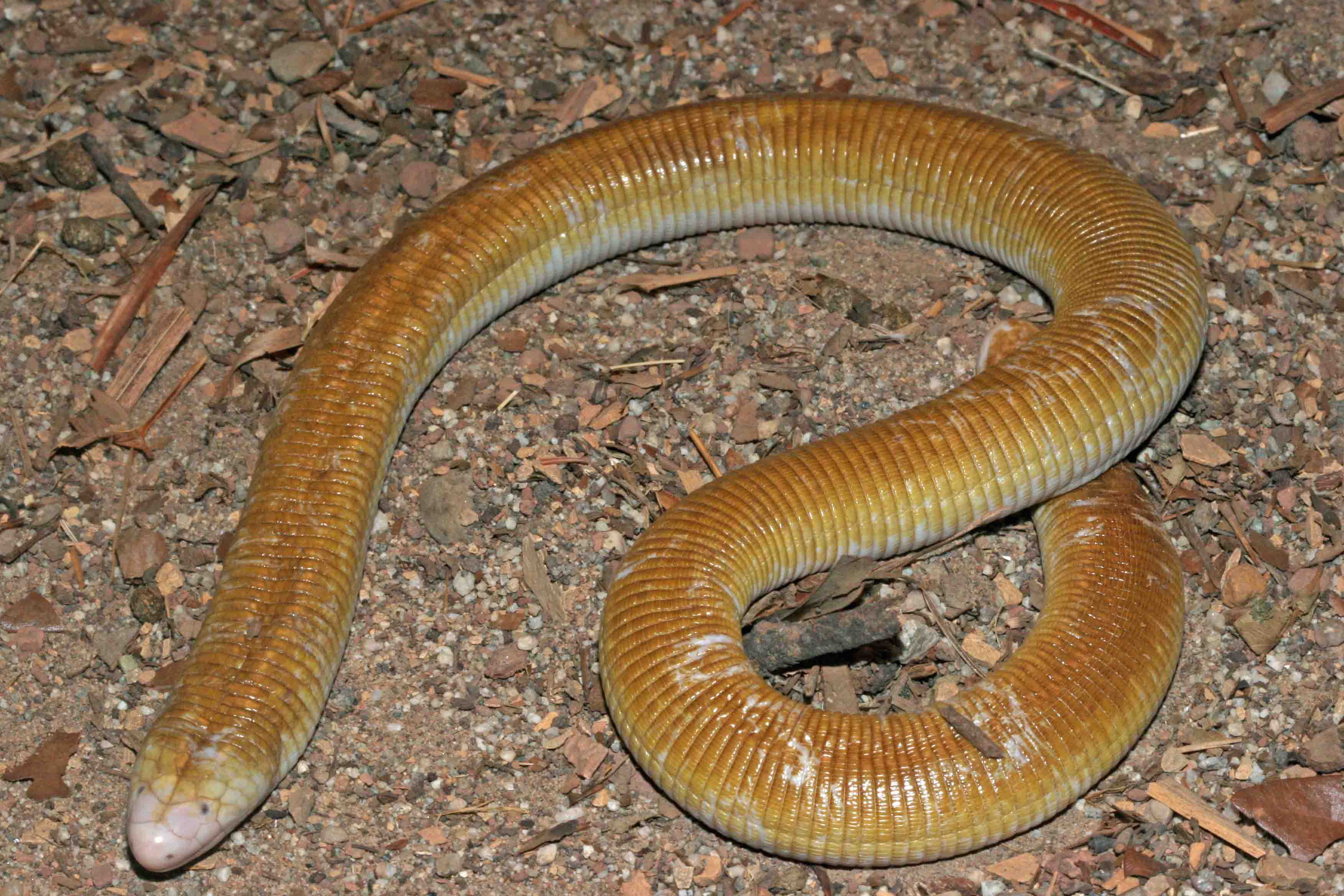
This almost all white example of the Giant Worm Lizard was found by a Peruvian villager.
Amphisbaenids are rather amazing creatures. In fact, they are so amazing that they are in their own family, the Amphisbaenidae. Most are legless, at least 3 species (in Mexico) have proportionately small, clawed, forelimbs but lack rear limbs. Amphisbaenids (often referred to as “worm lizards”) have for the most part, a, wedge-shaped head of the same width as their bodies that is adapted for digging, a cylindrical body, loose skin, scales arranged in rings, and a short tailt. Some species are long and slender, others, especially the European members of the family, are shorter and proportionately stout.
Despite perpetual but never confirmed tales of a Pacific Coast species, only a single taxon, the 14” long Florida Worm Lizard,
Rhineura floridana, is known to occur in the USA. This, as suggested by both its common and species names, may be found in FL and extreme South Central Georgia.
The largest/longest amphisbaenid, is the 2 to 2 ½ foot long Giant Amphisbaenid,
Amphisbaenia alba of South America where it ranges southward from Venezuela and Trinidad to Northern Argentina. It is also known as the Red (dorsal and lateral color) or the White-bellied (self-explanatory) Amphisbaenid.
In our dozens of trips to Amazonian Peru we had never seen one of these impressive creatures until one day a villager walked into the compound holding one that had been found near his home. Notable were the already mentioned colors, the darker eyespots, and the fact that while held it was not hesitant to attempt to bite.
Much in print information about this remarkable “worm lizard” is speculative. However, it is known that it is oviparous, laying ~12 eggs. It is also known that this burrower is often found in association with the nests of leaf-cutting ants. Stomach contents have disclosed that this species is primarily insectivorous, but also will eat nestling rodents and earthworms. One that I maintained was very fond of nightcrawlers. When defending itself the body is usually coiled in a semi-circle and both head and tail are turned upwards—but only the head, with widely opened jaws, need be watched (LOL)..
The Giant Worm Lizard has rather well-developed eyes.

This red-backed example was found in Suriname.




